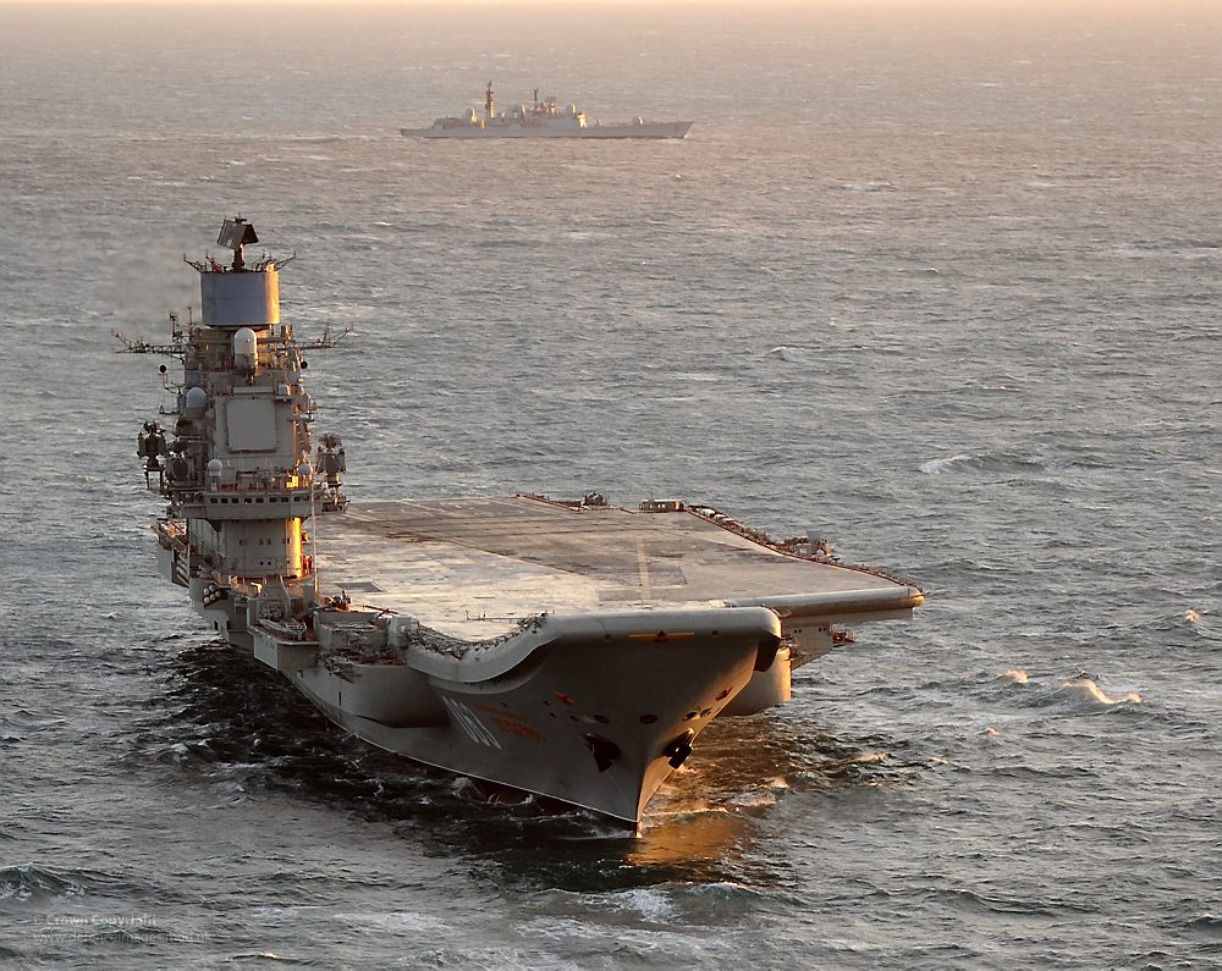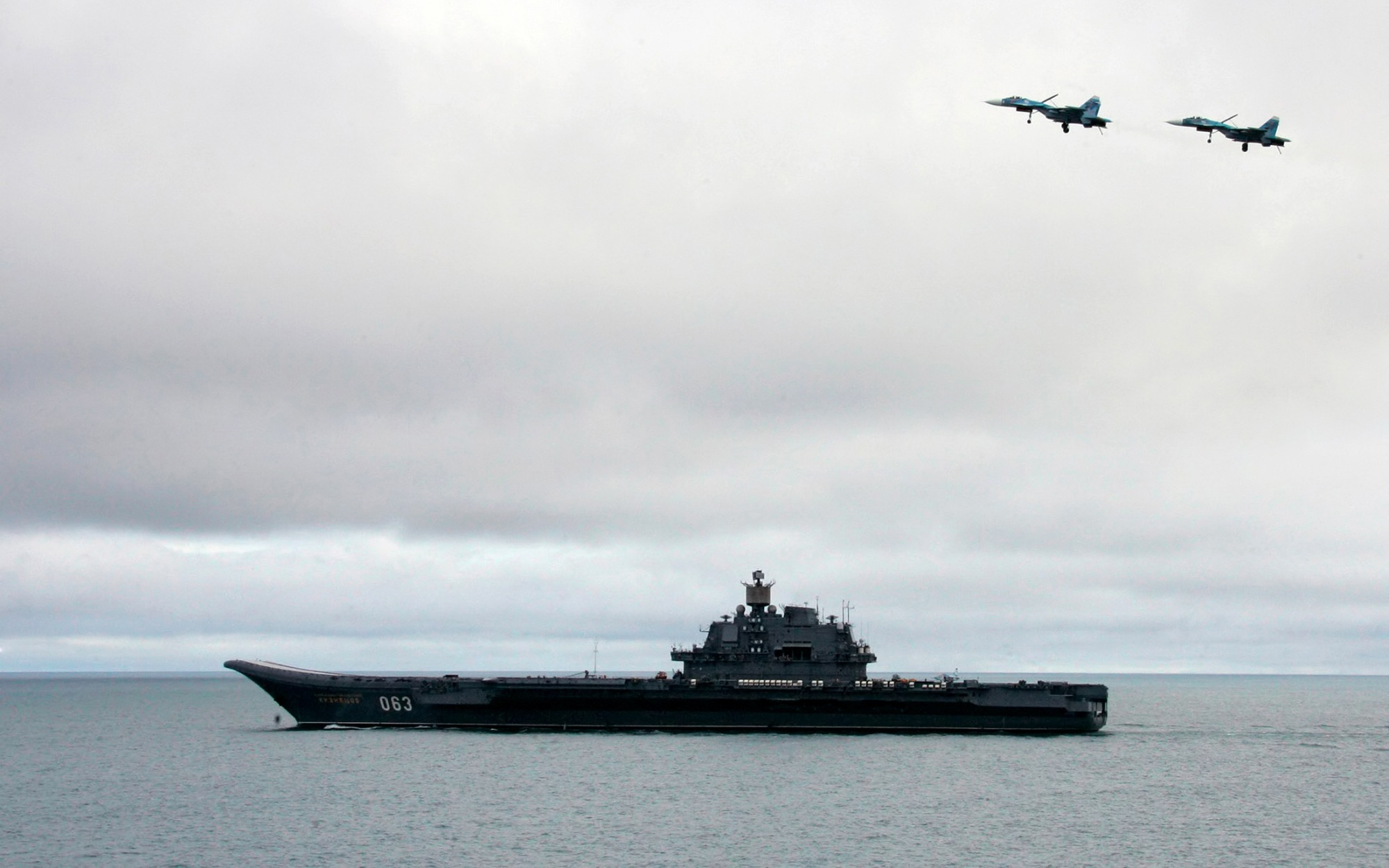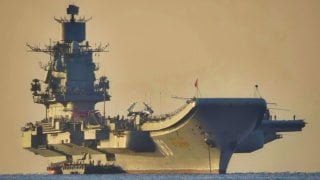Russia's Last Aircraft Carrier Admiral Kuznetsov: "Useless and Undeployable"
The Russian Navy’s sole aircraft carrier, Admiral Kuznetsov, is widely regarded as a carrier in name only due to its persistent technical issues and operational failures. Commissioned during the Cold War, the Kuznetsov has faced numerous problems, from its reliance on low-quality mazut fuel to shoddy construction that prevents its boilers from operating at full capacity.
Summary and Key Points: The Russian Navy’s sole aircraft carrier, Admiral Kuznetsov, is widely regarded as a carrier in name only due to its persistent technical issues and operational failures. Commissioned during the Cold War, the Kuznetsov has faced numerous problems, from its reliance on low-quality mazut fuel to shoddy construction that prevents its boilers from operating at full capacity.

-Unlike Western carriers, which use advanced catapult systems, Kuznetsov uses a bow ramp that limits its ability to launch heavier aircraft. Its only combat deployment in Syria resulted in the loss of two aircraft due to faulty arresting wires.
-Despite its shortcomings, the Kremlin is unlikely to decommission the carrier amidst the ongoing invasion of Ukraine, using it instead as a propaganda tool to maintain its "carrier capable" -status.
Moscow’s Sole Carrier: Admiral Kuznetsov’s Tarnished Legacy
While Russia may technically be an aircraft carrier nation, this title certainly exaggerates the extent of Admiral Kuznetsov’s capabilities. In fact, Moscow’s sole carrier is widely understood to be a carrier in name only.
For decades, the hefty ship has suffered from a myriad of unfortunate events that have effectively rendered its capabilities as an aircraft carrier useless. Amidst Russia’s ongoing invasion of Ukraine, however, the Kremlin is unlikely to officially scrap the Kuznetsov. Moscow’s ship fleet has already suffered serious damage at the hands of Ukrainian forces in the Black Sea and the decommissioning of the Kuznetsov would serve as another major blow to the country.
Instead, the Kremlin will continue to use its sole carrier as more of a prop for propaganda purposes.
The History of this Aircraft Carrier
Kuznetsov was initially commissioned in the Soviet Navy during the Cold War. Named to honor a revered USSR Admiral Nikolay Gerasimovich Kuznetsov, the carrier was designed to support and defend missile-carrying submarines and other aircraft in the Soviet Navy as a “heavy aircraft-carrying cruiser.”
Perhaps Kuznetsov's most distinctive characteristic is its fuel source. Unlike Western ships developed during the Cold War that used nuclear power or gas turbines for energy, the Soviet vessel was conventionally powered by mazut. This smoky, tar-like substance creates a thick viscosity and has therefore been designated as a low quality fuel source. Health-wise, mazut is horrible for the health of sailors. Additionally, the goopy substance is bad for the environment.
In addition to this poor fuel source, Kuznetsov was constructed shoddily at best. Specifically, insufficient piping installed during the carrier’s initial construction prevents its boilers from operating at full capacity simultaneously. This issue has only confounded the mazut’s shortcomings as proper boiler and piping installations are necessary to ensure it can be properly pre heated and pressurized.
More Problems for Russia's Last Aircraft Carrier
The purpose of an aircraft carrier is to serve as a floating airbase for a country’s military. Unlike its Western counterparts which use magnetic-powered catapults and steam-powered catapults to carry out flight operations, the Russian carrier uses a simple bow ramp. The bow ramp is far less effective than the alternatives and prevents Moscow from launching heavier aircraft. In fact, the only time Kuznetsov has deployed to combat, this launch system failed. The carrier deployed to Syria in 2016-2017 and lost two airframes when faulty arresting wires failed to secure their landing.

As detailed by USNI News, “A fighter assigned to the Russian carrier operating in the Eastern Mediterranean crashed during a landing approach on Sunday. The Mikoyan MiG-29K was part of a trio of MiGs that had sortied from Russian carrier Admiral Kuznetsov headed over Syria. At one point, for unknown reasons, one of the fighters turned back to the carrier and crashed while on approach to the carrier, the official said.”
Today, Kuznetsov remains useless and undeployable. Until Russia develops another aircraft carrier, however, this ship will likely remain intact to ensure the country retains its “carrier capable” status.
About the Author: Defense Expert Maya Carlin
Maya Carlin, National Security Writer with The National Interest, is an analyst with the Center for Security Policy and a former Anna Sobol Levy Fellow at IDC Herzliya in Israel. She has by-lines in many publications, including The National Interest, Jerusalem Post, and Times of Israel. You can follow her on Twitter: @MayaCarlin.
All images are Creative Commons.


